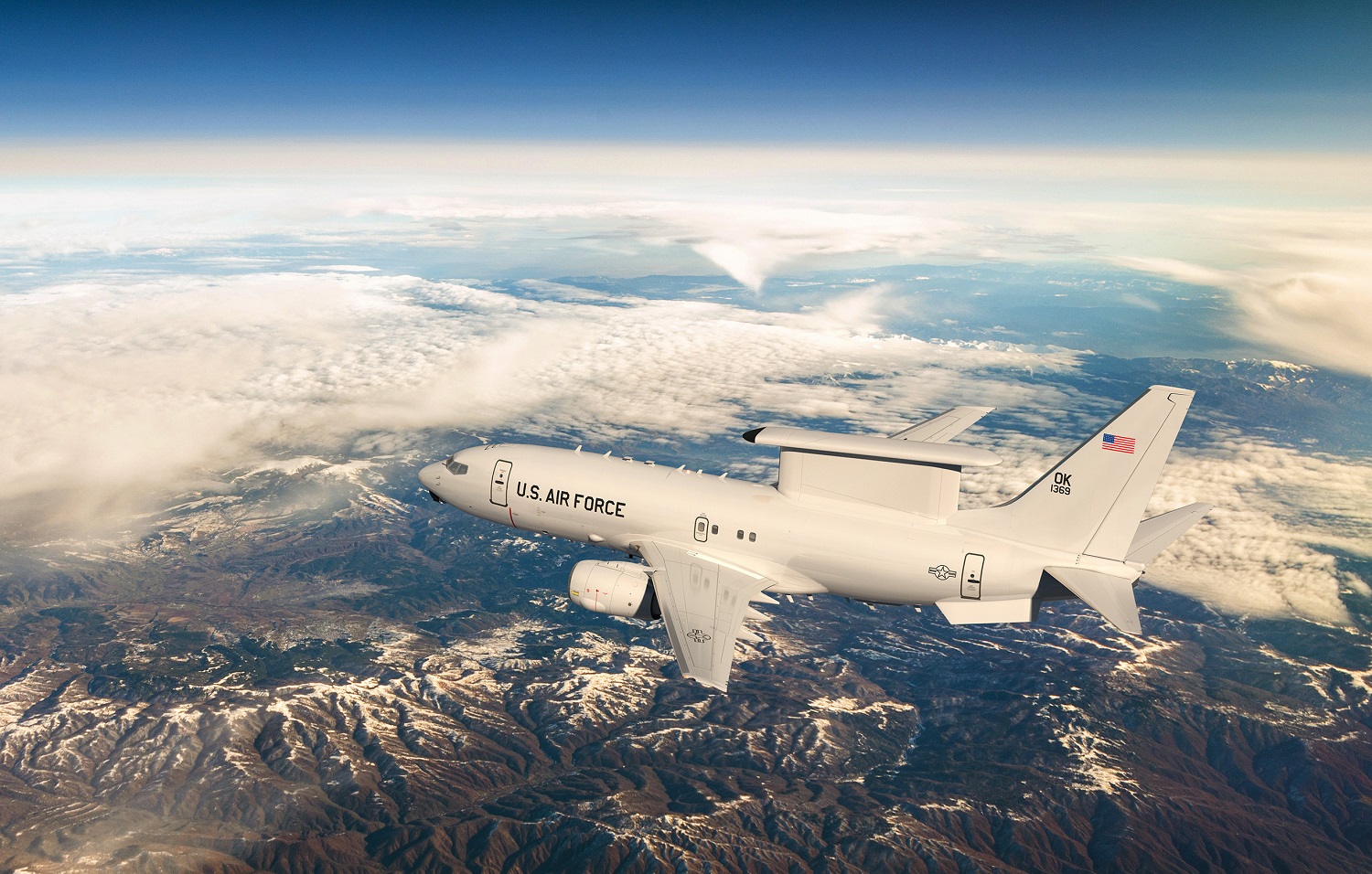The NATO Support and Procurement Agency (NSPA) has announced its acquisition strategy for an initial Alliance Future Surveillance and Control (iAFSC) capability. Based on a US Foreign Military Sales (FMS) case, NSPA is taking steps towards acquiring 6 E-7A Airborne Early Warning and Control (AEW&C) Wedgetail aircraft manufactured by Boeing. The chosen iAFSC acquisition strategy plans to deliver the requirements defined by the NATO strategic commands and to meet operational needs of NATO and nations. The approach recognises the benefits of economies of scale, commonality and interoperability deriving from multinational acquisition of military off-the-shelf platforms. It also ensures a smooth transition from the existing capability across other lines of development and into the future.
NATO’s current Airborne Warning and Control System (AWACS) fleet, a key surveillance and control asset, is scheduled to retire around 2035. iAFSC will deliver an initial element to mitigate the risk of airborne surveillance and control capability gap. The Wedgetail will be integrated, as one contributing element, to the overall Alliance Future Surveillance and Control (AFSC) system of systems capability. Through a rigorous assessment process, NSPA, along with NATO and national experts, assessed industry’s responses to Requests for Information (RFI) and Price and Availability (P&A), as well as capabilities of firms identified on the NSPA Source File. This also involved defence industry research, including comparable AEW&C acquisition programmes in Australia, South Korea, Türkiye, the United Kingdom and the United States.

NATO has operated a fleet of E-3A Airborne Warning and Control (AWACS) aircraft since the 1980s. Based at Geilenkirchen airbase in Germany, the AWACS have flown in every major NATO operation. The Support Partnership Nations- (Belgium, Germany, Luxembourg, the Netherlands, Norway, Romania, and the United States) and NSPA concluded that the Boeing E-7A AEW&C Wedgetail is the only known system currently capable of fulfilling the strategic commands’ essential operational requirements and key performance parameters and available for delivery within the timeframe required. Production of the six new Boeing’s E-7A Wedgetail aircraft is set to begin in the coming years, with the first aircraft expected to be ready for operational duty by 2031.
The Boeing 737 AEW&C is a twin-engine airborne early warning and control aircraft based on the Boeing 737 Next Generation design. It is lighter than the 707-based Boeing E-3 Sentry, and has a fixed, active electronically scanned array radar antenna instead of a rotating one. It was designed for the Royal Australian Air Force (RAAF) under “Project Wedgetail” and designated E-7A Wedgetail. The 737 AEW&C has also been selected by the Turkish Air Force (under “Project Peace Eagle”, Turkish: Bar?? Kartal?, designated E-7T, the Republic of Korea Air Force (“Project Peace Eye”, Korean: “?? ??”), and the United Kingdom (designated Wedgetail AEW1). In April 2022, the United States Air Force announced that the E-7 will be replacing the E-3 beginning in 2027.

The 737 AEW&C is roughly similar to the 737-700ER. It uses the Northrop Grumman Electronic Systems Multi-role Electronically Scanned Array (MESA) radar. The electronically scanned AEW and surveillance radar is located on a dorsal fin on top of the fuselage, dubbed the “top hat”, and is designed for minimal aerodynamic effect. The E-7 Wedgetail is an advanced early warning and control aircraft that provides situational awareness and command and control functions. Equipped with a powerful radar, the aircraft can detect hostile aircraft, missiles and ships at great distances and can direct NATO fighter jets to their targets.
The radar is capable of simultaneous air and sea search, fighter control and area search, with a maximum range of over 600 km (look-up mode). In addition, the radar antenna array is also doubled as an ELINT array, with a maximum range of over 850 km at 9,000 metres (30,000 ft) altitude. Radar signal processing equipment and central computer are installed directly below the antenna array. Other modifications include ventral fins to counterbalance the radar and countermeasures mounted on the nose, wingtips and tail. In-flight refueling is via a receptacle on top of the forward fuselage. The cabin features eight operator consoles with sufficient space for four more; the Australian fleet will operate ten consoles with space for two more (four on starboard side and six on the port side).















